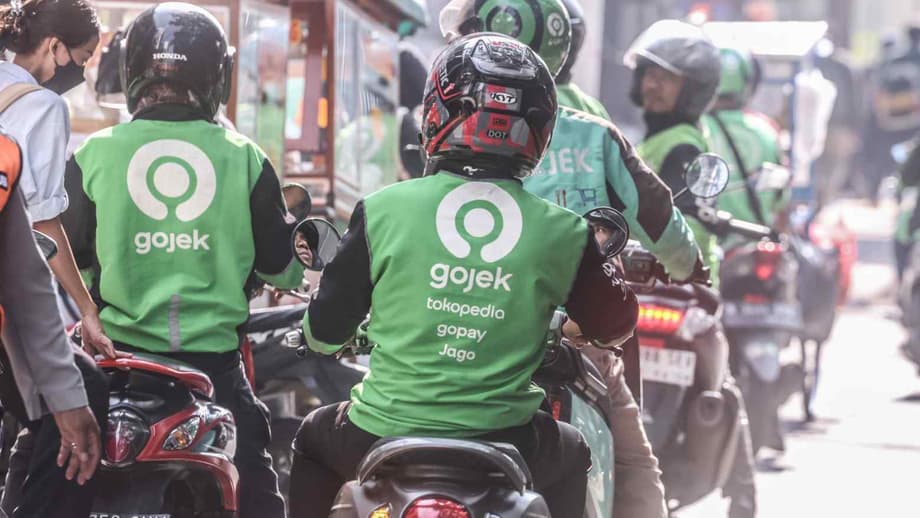Inside GoTo’s new growth bet
GoTo Group, the Jakarta based tech platform behind Gojek, Tokopedia and GoPay, is doubling down on financial services. The company plans to build more in app minigames that encourage people to explore credit features and small cash loans. The push arrives as ride hailing and delivery growth stabilizes, while payments, lending and other money services take a larger role in the business.
Management has steered users toward GoPay as a daily utility, then into simple saving and borrowing tools within the same app. Interactive challenges, daily check in rewards and light games have already helped drive engagement in payments. The next step is to link those moments of attention to trials of responsible credit. The company’s recent results show why this matters. Financial services are expanding faster than on demand services, and GoPay activity keeps setting new highs.
This strategy taps into a broader pattern across finance apps. Playful design, informed by behavioral science and user experience research, can turn occasional use into habits. In money apps, that can translate into more frequent payments, higher retention and, over time, lower customer acquisition costs for adjacent products like pay later and small cash loans.
Why minigames change user behavior
Minigames are bite sized, optional activities inside an app. Examples include daily check in streaks, spin to win wheels that award small vouchers, scratch cards, progress bars that fill as tasks are completed and missions that unlock rewards. These features are not full games. They are light interactions that create a quick sense of progress and anticipation. They fit neatly into the brief moments when people open a wallet app to pay a bill, top up data or send money.
In finance apps, these mechanics are often used to nudge helpful actions. A streak can encourage users to return daily, a progress bar can guide someone through setting up bill reminders, and a reward can invite a user to try a new feature. Over time, these small prompts can lower the barrier to test a credit tool, such as a pay later installment at checkout or a small line of credit with clear, upfront pricing and a short repayment schedule.
From play to product trial
The core idea is simple. If users open GoPay more often and stay longer, the app has more chances to present a prequalified credit offer at the right moment. A check in reward might lead to a discount for paying a utility bill with GoPay, and that transaction can be the context for a gentle prompt to try a first installment plan. If the user accepts, the loan is small, the terms are plain, and repayment is automated inside the same app experience.
The minigame toolkit that keeps users coming back
GoTo has already leaned on a familiar set of tools. Daily check in bonuses build streaks. Spin to win and scratch cards offer low stakes excitement with tiny prizes like vouchers or fee waivers. Missions tie small tasks to rewards, for example paying a phone bill, transferring to a friend and topping up the wallet in a single week. Progress bars and badges show a sense of completion. These features work best when they are quick, reliable and use very little data, which matters for users on entry smartphones and slower connections.
Under the hood, these interactions feed a dynamic playbook. If a user engages with bill payments, the app can surface relevant missions and discounts. If a user shows interest in shopping on Tokopedia, the app can offer a first installment plan with a low limit and short term. The goal is to make the next helpful action obvious and low friction, not to bombard users with offers.
Turning engagement into preapproved credit
Preapproval is where engagement and underwriting meet. Wallet activity, e commerce purchase histories and verified identity checks create a picture of a user that can support a cautious starting limit. Instead of sending someone to a long form, the app can present an offer that is already tailored, with repayment amounts and dates that match prior behavior. Repayments can come from wallet balance or linked accounts, which keeps the experience simple and reduces missed payments.
GoPay momentum and the data advantage
Recent performance highlights why GoTo is expanding this approach. In the third quarter, net revenue reached about 4.7 trillion rupiah, a rise of roughly 21 percent from a year earlier. The company recorded an adjusted pre tax profit of about 62 billion rupiah for the period and raised its adjusted earnings guidance for the year to a range of about 1.8 trillion to 1.9 trillion rupiah. Financial services revenue came in near 1.5 trillion rupiah, up around 55 percent year on year, supported by growth in consumer loans and steady gains in payment transactions. GoPay surpassed 500 million transactions in September for the first time.
On demand services revenue, which includes ride hailing and delivery, was about 3.2 trillion rupiah, up around 10 percent. The GoPay network has reached considerable scale. Roughly 3 percent of Indonesia gross domestic product is processed within the GoPay ecosystem, and around 12 percent of the country’s adult population use the app every month. Gross transaction value for financial services rose about 30 percent year on year to roughly 170 trillion rupiah.
A standalone GoPay app launched in 2023 to push deeper beyond major cities. The app uses less mobile data, runs smoothly on lower cost phones and touts features like free transfers and lower bill payment fees. Interactive elements such as daily check in rewards and minigames have helped the app reach mass market users across tier 2 and tier 3 cities. That broader reach supplies more transaction data and, with permission, stronger inputs for credit models.
Loans at the center, with Bank Jago inside
GoTo holds a stake of about 22 percent in Bank Jago. The bank is integrated inside GoPay, allowing users to open and manage accounts from within the app. That link creates a clear path from everyday payments to saving to borrowing. It simplifies funding flows for loans and gives users a single place to track balances, repayments and upcoming bills.
Regular digital banking activity, like incoming salary deposits and timely bill payments, adds verified information that can improve credit scoring and reduce defaults. For borrowers, auto repayment and reminders lower the risk of missed payments. For GoTo and its partners, closer integration can reduce servicing costs and improve recovery when a borrower falls behind.
This structure also supports faster product development. The company can start with small, simple credit lines, increase limits after a record of on time repayment, and offer installment options at checkout on Tokopedia and other merchants. Over time, the same fabric can support adjacent products such as micro insurance and savings pockets that help users set aside funds for bills.
Competition across Indonesia fintech
Indonesia is one of the most active digital finance markets in Southeast Asia. Digital wallets, pay later services and online lenders compete for attention every day. Regional platforms such as Grab and Sea Group, alongside local specialists like Kredivo and Akulaku, are all chasing the same goal of turning frequent app visits into deeper financial relationships.
Many of these apps use playful design to encourage habits. Daily tasks, reward points and game like challenges spur repeat visits. The mechanics are similar, yet execution matters. Apps that keep rewards simple, reliable and tied to useful actions tend to see better retention without pushing users into unwanted products.
The contest has shifted from winning downloads to building routines. When users return daily for small rewards, the cost to bring them back drops, and the app has more chances to present relevant services. That can support healthier unit economics in lending, where fee income and interest margins must cover credit losses and promotional spend.
Guardrails, regulation, and risk control
Lending is tightly supervised in Indonesia. Regulators have stepped up oversight of consumer lending and pay later services in recent years. This includes expectations around responsible marketing, standardized pricing disclosures, affordability checks and data protection. In this environment, gamified experiences must be designed with care so they encourage good habits rather than impulsive borrowing.
Responsible design starts with limits and plain language. Small starting limits, clear total costs in rupiah before a user taps confirm, and repayment dates that match pay cycles are simple protections. Cooling off periods can prevent multiple loans in quick succession. Warnings can appear when a user approaches a limit, and educational tips can explain how interest and fees work. Games should never require a loan to claim a reward. Rewards tied to healthy actions, like setting up a bill reminder or building an emergency buffer, are safer choices.
Sound underwriting keeps losses in check. GoTo can use a mix of wallet and marketplace histories, device checks and bank signals from partners to verify identity and measure risk. Models can react to early signs of trouble by reducing limits or pausing offers. Repayment performance feeds back into the system, raising limits only after evidence of consistent on time payments. Fraud controls, including biometric verification and anomaly detection, help prevent promotion abuse and identity theft that sometimes accompany gamified campaigns.
What to watch in the next 12 months
Adoption and engagement are the first markers. Daily active users of GoPay, the share of users who interact with minigames and the number of users who complete their first loan will show if the approach is working. Time to second and third loans, along with repayment behavior, will indicate whether onboarding through play leads to healthier long term relationships.
Credit quality will remain a central theme. Metrics such as past due ratios, net charge offs and roll rates across different borrower cohorts will show whether risk is contained. Movement in these measures across regions, income bands and product types will be useful to watch as the app reaches deeper into smaller cities.
Unit economics will draw investor focus. Cost of risk, funding costs through banking partners, marketing expense per active borrower and cash operating profit per loan are the key levers. Improvements in these measures would support the case that games are not just fun add ons, but part of a lower cost growth engine for lending.
Product breadth and partnerships will also matter. Savings tools, insurance and investment features inside GoPay can diversify revenue and deepen engagement. Deeper collaboration with merchants on Tokopedia, telcos and utility providers can extend use cases and improve data for underwriting and fraud prevention. Execution on these fronts will shape the durability of growth.
Key Points
- GoTo will build more in app minigames to nudge users toward trying loans as financial services outpace ride hailing and delivery.
- Playful mechanics like daily check ins, spin to win and missions are used to build habits that support payments and credit adoption.
- In the latest quarter, net revenue was about 4.7 trillion rupiah, up roughly 21 percent year on year, with adjusted pre tax profit near 62 billion rupiah.
- Financial services revenue reached about 1.5 trillion rupiah, up around 55 percent, and GoPay passed 500 million monthly transactions in September.
- On demand services revenue was about 3.2 trillion rupiah, up around 10 percent, as growth shifts toward fintech.
- GoPay processes roughly 3 percent of Indonesia GDP, and around 12 percent of adults use the app monthly, supporting data driven underwriting.
- GoTo owns about 22 percent of Bank Jago, integrating banking inside GoPay to enable deposit, payment and lending journeys in one place.
- Competition is intense, with Grab, Sea, Kredivo and Akulaku also using rewards and game like features to drive retention and credit usage.
- Regulators have tightened oversight of lending and pay later, making responsible design, clear pricing and affordability checks essential.
- Key metrics to watch include engagement with minigames, first to repeat loan conversion, credit losses, cost of risk and unit profitability.




